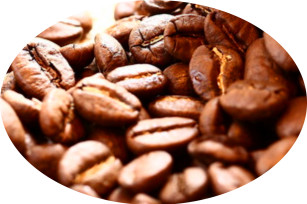Characteristics of Dominica coffee beans in Dominica coffee producing areas
The Dominican Republic is a favorite country for travelers. It borders Haiti on Hispaniola in the West Indies, Dominica to the west and Haiti to the east. The whitest and softest white beaches in the world, coupled with cool sea breezes from the Atlantic and Caribbean and warm tropical sunshine, make it a holiday paradise on par with the Maldives and Hawaii. It is the second European colony on the American continent after Greenland and currently houses the oldest Catholic churches, universities, roads and forts in the Americas, while its capital Santo Domingo is also the oldest city and capital in the Americas.
The Dominican Republic has also experienced a history of turmoil and poverty. Now the country has implemented democratic elections and entered a period of stable development. However, it has not yet established formal diplomatic relations with China, but maintains so-called "diplomatic relations" with Taiwan. It seems that these things have nothing to do with coffee, but in fact they still have an impact. The exchanges between the two countries without diplomatic relations are subject to many restrictions in all aspects, which will of course also affect our coffee trade. Dominican coffee is mainly exported to the United States and a small number of European countries because of its superior quality. It is rarely seen in the mainland of China.
Dominica-white sand beach with black coffee
The earliest coffee in Dominica was introduced from Martinique (French overseas department), dating back to the early 18th century. Dominica is an island country with a tropical climate. The annual temperature does not change much. Except for the middle Cordillera mountain area, where the temperature is relatively low and can reach below 0℃ in winter, the annual average temperature in other areas is between 25 and 30℃. However, due to the influence of mountain terrain, the north and east face the northeast trade wind, and the annual precipitation reaches 1500-2500 mm. It belongs to a tropical marine climate. Mountain forest dense, leeward southwest annual precipitation of 500-1000 mm, longer dry season, a tropical savanna climate.
Dominica's mild climate is conducive to coffee cultivation, and the best production areas for coffee are the Barahona region in the southwest and the Cibao Valley in the interior north of Santiago, Dominica's second largest city. The northern region, represented by Ciba, and the southern region, including Ocayabani Santo Domingo, produce fine coffee. Among them, Santo Domingo and Bani produced coffee world-famous, almost synonymous with Domica coffee.
Dominica-white sand beach with black coffee
Dominican coffee tastes slightly different according to the altitude of the planting area. Highland coffee is sour, but the taste is rich; lowland coffee is less sour and tastes smoother. Some Dominican estates produce high-quality coffee beans with a rich aroma, rich taste and moderately bright acidity, often compared to the prestigious Puerto Rico or Jamaica beans.
Dominica-white sand beach with black coffee
Opening the introduction of Dominican coffee, the most distinctive characteristics are fresh and elegant, full of particles, excellent acidity and pleasant aroma (two colleagues agree with this evaluation). Such flavor characteristics are not only related to varieties and planting soil quality, but also closely related to the picking and processing methods of raw beans. Dominican coffee selection adopts the most costly manual method. Workers mainly consider the fullness of coffee particles and whether they are uniform. According to these conditions, coffee beans with the most plump and uniform particles can represent the best quality and best coffee in Dominica. And only choose washing treatment method, to ensure the high quality and stability of coffee beans, water washing method of coffee beans, taste cleaner, exudes a light fragrance pure and soft, drink to people can feel a faint fruity, lingering, smooth.

Important Notice :
前街咖啡 FrontStreet Coffee has moved to new addredd:
FrontStreet Coffee Address: 315,Donghua East Road,GuangZhou
Tel:020 38364473
- Prev

Blue Mountain Coffee Flavor Blue Mountain Coffee characteristic Blue Mountain Coffee
Blue Mountain Coffee refers to coffee brewed from beans from the Blue Mountains of Jamaica. According to the grade, it is divided into Jamaica Blue Mountain Coffee and Jamaican Alpine Coffee. The Blue Mountains are located in the east of the island of Jamaica (Jamaica). Because the mountain is surrounded by the Caribbean Sea, whenever the weather is clear, the sun shines directly on the blue sea, and the peaks reflect the bright blue light of the sea.
- Next

Tanzanian coffee flavor Tanzanian coffee flavor Tanzanian coffee taste
Due to political instability and rampant diseases and insect pests, the coffee industry in Tanzania has been damaged, leading to a decline in the overall level of coffee and instability in quality, which in turn lead to lower prices, which are usually the result of a further decline in the coffee industry. What's more, it is estimated that more than 12% of the Arabica coffee grown in northern Tanzania from 1969 to 1985 has gone.
Related
- Detailed explanation of Jadeite planting Land in Panamanian Jadeite Manor introduction to the grading system of Jadeite competitive bidding, Red bid, Green bid and Rose Summer
- Story of Coffee planting in Brenka region of Costa Rica Stonehenge Manor anaerobic heavy honey treatment of flavor mouth
- What's on the barrel of Blue Mountain Coffee beans?
- Can American coffee also pull flowers? How to use hot American style to pull out a good-looking pattern?
- Can you make a cold extract with coffee beans? What is the right proportion for cold-extracted coffee formula?
- Indonesian PWN Gold Mandrine Coffee Origin Features Flavor How to Chong? Mandolin coffee is American.
- A brief introduction to the flavor characteristics of Brazilian yellow bourbon coffee beans
- What is the effect of different water quality on the flavor of cold-extracted coffee? What kind of water is best for brewing coffee?
- Why do you think of Rose Summer whenever you mention Panamanian coffee?
- Introduction to the characteristics of authentic blue mountain coffee bean producing areas? What is the CIB Coffee Authority in Jamaica?

